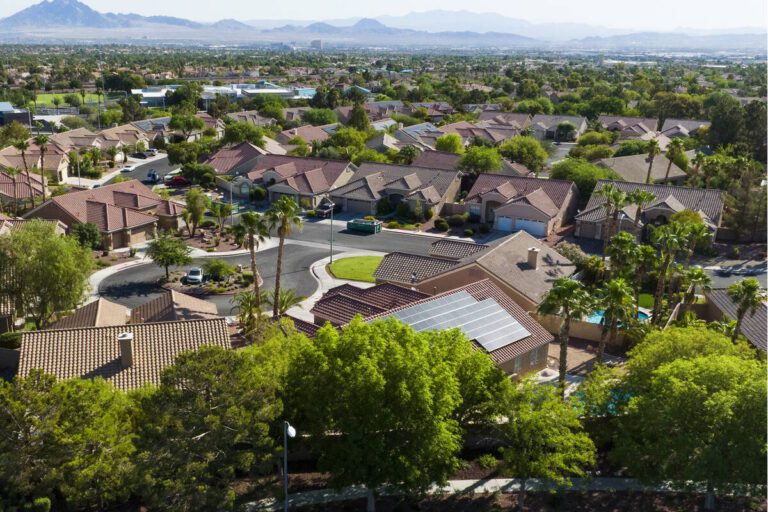Las Vegas Real Estate Inventory Soars in 2024
The Las Vegas Valley is experiencing a significant surge in residential real estate inventory, with an impressive 44.5% increase year-over-year, as reported by Zillow. This uptick is part of a broader trend observed across the United States, where new listings are entering the market at an accelerated pace.
National Trends Reflected in Las Vegas
Kara Ng, a senior economist at Zillow, noted that Las Vegas is at the forefront of this national phenomenon. “What’s happening nationally is playing out similarly but more prominently in Las Vegas,” she stated. Despite a surge in listings, demand has not kept pace, leading to a backlog of homes on the market. Ng emphasized that even with a 45% year-over-year increase, current inventory levels remain about 20% lower than pre-pandemic benchmarks.
Increasing Listings and Rising Prices
Nationwide, real estate inventory rose by 19%, indicating that the Las Vegas Valley’s increase surpasses the national average by 25%. The total homes available for sale across the country has reached 1.15 million, representing the highest inventory since March 2020.
Home prices in Las Vegas have also followed an upward trajectory, with values increasing 3.3% from March of last year, resulting in an average home price of $433,664, compared to $359,741 nationally. While prices have risen slightly by 0.2% from February 2024, the market has also seen a rise in price reductions, with 27.1% of listings experiencing price cuts compared to 19.8% last year.
A Challenging Market for Buyers
Ng identified affordability as a growing concern, particularly for first-time buyers who may be heavily reliant on savings. Fluctuations in the stock market could further complicate down payment capabilities. “Home values in Las Vegas have risen significantly. Affordability is a hurdle, especially for first-time buyers,” Ng remarked. With sellers typically more financially established, this dynamic is resulting in an accumulation of homes on the market, thus normalizing inventory levels.
Market Dynamics and Future Outlook
Recent reports indicate that homes in the Las Vegas Valley are taking longer to sell, averaging 44 days on the market—markedly higher than the national average. Furthermore, a study conducted by UNLV revealed that the area has been underbuilding homes compared to pre-Great Recession levels for the past 15 years.
Conclusion
The current real estate landscape in Las Vegas presents unique challenges and opportunities. While inventory levels are rising, buyers face increased competition and affordability concerns. The evolving market dynamics suggest that both buyers and sellers need to navigate this complex environment carefully.
For further inquiries, contact Patrick Blennerhassett at [email protected].


